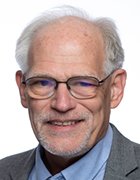
Getty Images/iStockphoto
Memory and storage experts share highlights from FMS 2024
Industry experts look back on the expanded FMS 2024, weighing in on the big takeaways and what discussions say about the future of the storage and memory markets.
Industry experts are reflecting on this year's Future of Memory and Storage Summit, and how storage and memory are evolving as IT evolves.
FMS used to be known as the Flash Memory Summit, but was rebranded this year to include other storage technologies such as HDDs and archives. The change "reflects the expanded scope, beyond flash and SSD, that we have been implementing in recent years," said Chuck Sobey, chief scientist at ChannelScience and general chair at FMS.
The show featured familiar themes such as AI, where discussions focused on quantum memory, or memory based on qubits instead of bits; high-bandwidth memory; stacked DRAM for high-performance computing (HPC) use cases; and blended memory using interfaces such as Compute Express Link (CXL). It also featured familiar topics such as the continuing need for HDDs to meet storage demands, flexible data placement and zoned storage for optimal data placement on quad-level cell (QLC) flash.
As in years past, vendors introduced or showcased a handful of new products -- most notably, Kioxia's demo of a broadband SSD with an optical rather than electrical interface. The optical interface allows for a greater physical distance between compute and storage for more efficient disaggregated storage. Micron introduced its first PCIe 6.0 data center SSD, which provides 26 GBps and is aimed at AI storage. Samsung had a bevy of products and updated V-NAND, but most notable was the BM1743 -- a large, 128 TB QLC SSD.
Here's what analysts and attendees took away from this year's FMS.
Experts weigh in on FMS
 Thomas Coughlin
Thomas Coughlin
Thomas Coughlin, president, Coughlin Associates: FMS included both magnetic recording products as well as NAND flash in a bigger way than in the past, fitting well with the name change.
I saw a big slowdown in increasing layers for NAND flash because of declining cost reductions from layers alone, and more of a focus by the major companies on increasing flash capacity with cell pitch, cell diameters, multiple bits per cell and other ways to increase capacity this year.
 Chuck Sobey
Chuck Sobey
Chuck Sobey, chief scientist, ChannelScience, and general chair, FMS: A strong theme throughout was AI. That includes how AI helps system designs, how AI affects the storage infrastructure, and how it drives the demand for more memory and storage.
Power is always important, and one speaker pointed out that using AI to generate one image from a text cue takes as much energy as charging a cellphone once a day for a year and a half. Just an example of the practical insights people share at FMS.
 Jean S. Bozman
Jean S. Bozman
Jean S. Bozman, president, Cloud Architects: The big difference this year was a greater emphasis on memory in general -- and discussing memory in all its different aspects. Given the focus on performance in areas like AI and HPC, having enough memory and having it working as efficiently and effectively as possible are key aspects for customers' future workloads.
AI in storage is another popular theme this year. While AI was spoken about in past conferences, the prevalence of AI and the rapid growth of AI, both from a vendor perspective and a customer perspective, has renewed focus on AI and generative AI this year.
We're seeing increased interest in scaling up AI applications as they become more widely adopted in enterprises and SMBs. Customers are adopting AI to gain deeper insights into the dynamics of their ongoing business -- and to improve their revenues and profits.
 Jim Handy
Jim Handy
Jim Handy, general director and semiconductor analyst, Objective Analysis: AI and CXL are the two big themes in the show this time around -- and AI is big because of the fact that Nvidia has just been growing for the past four quarters now.
CXL is a lot of different things. The question is, which of those things is the most important? Two years ago, everybody was talking about stranded memory and how [CXL is] going to get rid of stranded memory by supporting memory pools. And lately, people have been saying, 'Well, maybe memory pools aren't as hot as all that, but it sure lets us put huge memories on things. And AI needs huge memories.' [CXL] solves that problem, and I wouldn't be at all surprised if, as the CXL market develops, we see a few further shifts in what it's supposed to be good for.
 Camberley Bates
Camberley Bates
Camberley Bates, chief technology adviser, Futurum Group: The intersection of memory and data storage technologies for AI processing stood out. There is a growing integration of these elements of data to address the power and speed of the CPUs and GPUs. This is recognized by both sides of the technologies. They will not merge, but will continue to evolve in the data storage hierarchy.
The strength of the SuperWomen of FMS also stood out. This started as a panel and has now grown into a vibrant community -- highly focused on the power of the women engineers in this industry. The event attracts both women and men to the gathering. What I see as unique [with SuperWomen] is the fact that 90% of the attendees at FMS are men. We have few women in the industry that are on the technical side.
Adam Armstrong is a TechTarget Editorial news writer covering file and block storage hardware and private clouds. He previously worked at StorageReview.






